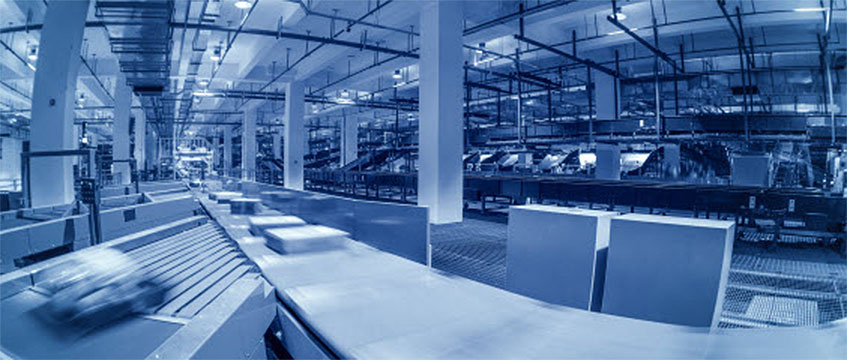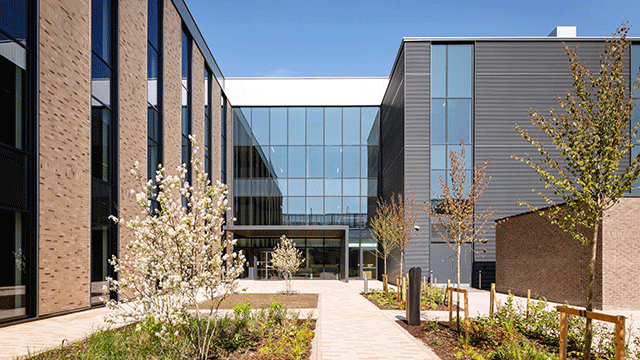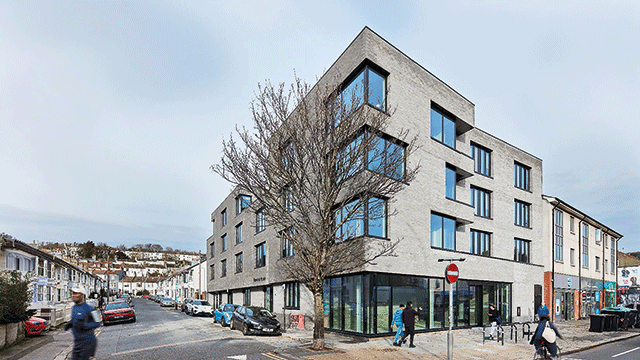Investment volumes in industrials reached record heights during 2018 but returns will narrow on the back of yield compression, according to new data.
Volumes jumped 10% year-on-year after £8.4bn of assets changed hands across more than 650 deals in 2018, according to the latest report by Lambert Smith Hampton.
Of this, £2bn was from overseas investment, largely underpinned by activity from investors based in the US and Asia.
UK institutions accounted for the lion’s share of investment volume for the 10th year in a row, investing £2.6bn in 2018.
But LSH noted that investors looking to drive performance will now be banking on rental growth alone, as a result of rising land values and record low yields.
However, with favourable rental growth prospects compared with other property sectors, UK industrial and logistics is still expected to outperform the wider market over the next five years.
In the face of heightened competition and rising rents, prime land values in south London soared by 50% during 2018 to around £3m per acre, while values in west London reached around £5m per acre.
For LSH, the key question now revolves around how to realise such rental growth, especially now that occupiers are having to cater for a boom in ecommerce demand while also “operating efficiencies for the more traditional logistics model”.
James Polson, national head of industrial and logistics at LSH, said the sector was “now at a crossroads”.
“In general terms, significant yield compression has left yields with little room for further movement, meaning attention must be resolutely focused on driving income,” he said.
“With land values at an all-time high and yields at an all-time low, unlocking future value is the challenge we face.”
Income growth to fuel returns
Returns totalled more than 20% during 2018, led by investment in London and the South East.
However, since yield compression is broadly considered to be exhausted, returns are expected to ease down. By 2020, income growth is predicted to be the main driver for returns.
Average rental growth for prime stock was 5% during 2018, marginally ahead of the 4.9% average growth seen in 2017. Meanwhile, for a sixth successive year, average growth in UK secondary rents outpaced prime, rising by 6.4% in 2018.
The degree to which UK industrial will outperform key commercial property sectors has nonetheless been revised down to “more modest” levels over the next five years.
LSH also reckoned the volume recorded in 2018 is likely to represent the “high-water mark” for investment activity, since more developers are retaining stock in their own funds and maximising income returns, rather than trading stock once completed.
Alongside greater caution towards shorter-leased secondary assets, this will be a key contributing factor to reduced transactional volumes in 2019.
Big-box wins big in take-up
Occupier take-up during 2018 dipped marginally on the previous year to 94.2m sq ft, 4% below the annual five-year average but the lowest since 2013.
Meanwhile, there was a reversal of fortunes between the mid-box (sheds sized 50,000 sq ft to 99,999 sq ft) and logistics (units above 100,000 sq ft) categories.
Logistics take-up rebounded to boom levels after increasing by 22% year-on-year, driven by a “proliferation of mega-deals” from both pure play and omnichannel retailers. This fell just shy of a record high in 2016.
At the other end of the spectrum, the mid-box sector endured a “real fall from grace”, with take-up falling to 8.4m sq ft – marking a nine-year low after record levels in 2017.
Take-up of small-to-medium sheds also fell, by 9% compared with 2017.
LSH noted this raised “questions about whether the new supply is meeting occupier needs on location and specification”.
Overall, grade-A space accounted for a record 38% share of UK-wide take-up in 2018, fuelled largely by a spike in the delivery of speculative developments and design-and-build deals in the big-box segment.
The mid-box category proved to be the exception: grade-A take-up was down 35% compared with its equivalent in 2017.
Speculative developments
The total volume of speculative space under construction around the UK rocketed 80% year-on-year, to stand at 13.5m sq ft at the end of 2018.
It is worth noting, however, that the number of individual units under construction plummeted 39% year-on-year.
At the end of 2018, 9.4m sq ft of space were under speculative construction in units above 50,000 sq ft – a 140% rise on the previous year’s equivalent.
Even though mid-box suffered a subdued performance in terms of take-up, speculative development in this segment saw the strongest growth among the size ranges.
At 2.3m sq ft, the volume of mid-box units under construction increased by 221% year-on-year.
LSH predicted 11.7m sq ft of speculative developments will come forward in 2019. However, the boom in speculative development is heavily weighted to the big-box market.
It warned the development response at the smaller end of the market has remained “elusive” in this cycle, and that there is a danger that the critical lack of supply of quality medium-sized and small properties will continue, despite “robust” demand.
East v West
There was also a striking difference in performance between UK regions. Take-up in the East Midlands hit a record 14.6m sq ft, while big box logistics take-up in the regions surged by 93%.
In contrast, the West Midlands stood out as the UK’s worst-performing region, among a number of areas showing below-trend take-up in 2018, including the South East, the South West and Scotland.
Take-up in the West Midlands hit a six-year low of 10.4m sq ft, owing to a lack of large logistics deals. LSH said this was down 29% on trend.
In terms of supply, the West Midlands saw a 27% rise in total supply, the sharpest year-on-year increase of any region since 2010, which was driven by “substantial” development activity.
Supply levels
On the back of a major uptick in speculative developments for larger units, supply in the UK rose by 3% during 2018 across the UK, highlighting the first year-on-year increase in eight years.
Both big- and mid-box categories recorded a 19% increase in supply. However, the number of available small-to-medium sheds fell by 10%.
Brexit trade-off
From a broader economic standpoint, the threat of a no-deal Brexit has resulted in a “cautious” start to 2019. LSH noted that if this is avoided, pent-up demand could be released with a rebound in activity.
And while a no-deal Brexit would halt occupier demand in the short term, the longer-term outlook is a little more balanced.
The report noted: “Reflecting the interdependency of supply chains across Europe, the initial disruption caused by a no-deal would have massive short-term implications for logistics occupiers, while the expected hit to the economy more generally would put the brakes on occupier demand across the wider market.
“Putting the short-term disruption aside, an end to frictionless trade with the EU would have both positive and negative ramifications for the logistics market and the manufacturing sector. While some occupiers could opt to retreat or consolidate their operations back to the European mainland, others will opt for a greater focus in the UK.”
To send feedback, e-mail pui-guan.man@egi.co.uk or tweet @PuiGuanM or @estatesgazette












